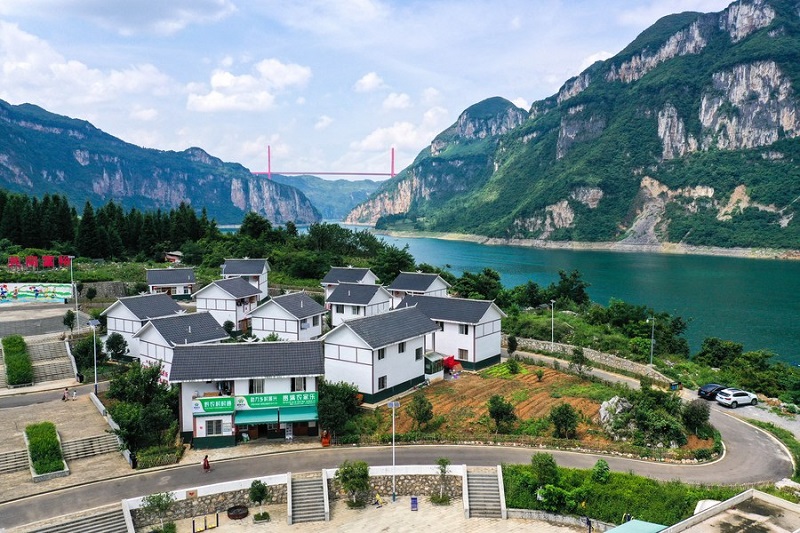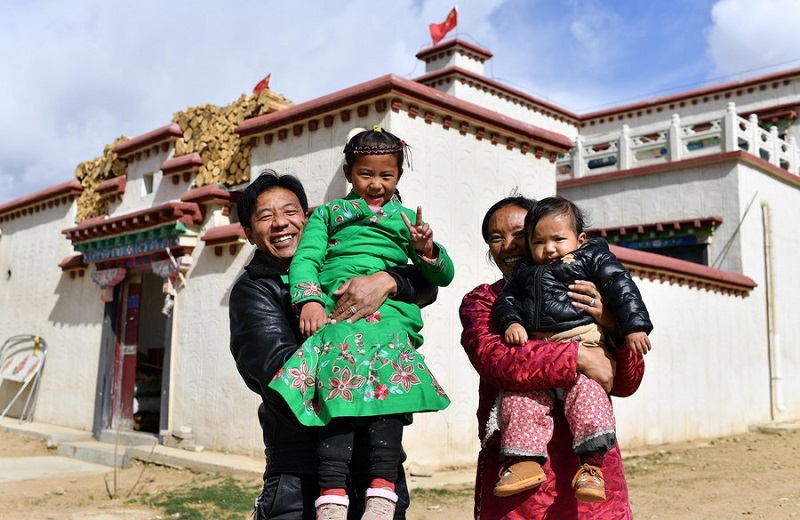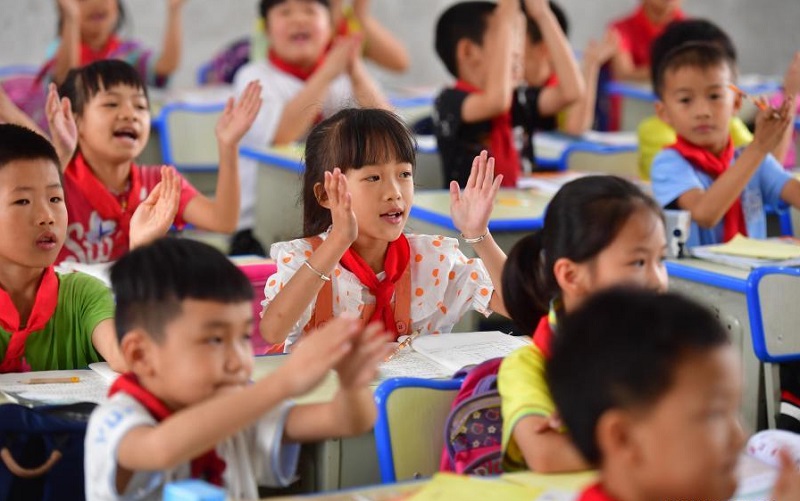People’s rights to subsistence and development comes first among all human rights. In that sense, poverty is the biggest obstacle to human rights. Poverty alleviation has always been a priority of all people in their quest of a good livelihood.
Ever since the founding of the People’s Republic of China, the Chinese government and its leadership have gained a wealth of knowledge and experiences in terms of poverty alleviation and human rights protection. Every policy and strategy made by China’s leadership would focus on how to lift people’s livelihood and build a prosperous country with people at center.
In 2021, which marks the 100th anniversary of the founding of the Communist Party of China (CPC), President Xi Jinping declared that China has secured a “complete victory” in its fight against poverty and has eliminated extreme poverty from its society. With this achievement, China entered a new era in the socioeconomic growth and the establishment of a prosperous society.
To transform the lives of the Chinese people, national leaders from generation to generation recognized that the incidence of extreme poverty is the most significant barrier to the progress of the nation. The Chinese government introduced and established a development-oriented poverty reduction plan with Chinese characteristics, with the purpose of resolving the issue of absolute poverty and promoting human rights.

According to the report Four Decades of Poverty Reduction in China: Drivers, Insights for the World and the Way Ahead, jointly released by Development Research Center of the State Council and World Bank Group in April, 2022, more than 800 million people successfully had shaken off absolute poverty in China over the past 40 years, accounting for 75 percent of global poverty population in the same period. Such a great success reached is a testimony to the effectiveness of the policies, dedication of the leaders and hard work of the Chinese people.
The CPC leadership and the Chinese government have always been dedicated to the development philosophy that prioritizes rights to livelihood and development of all people. Based on the notion, the governments at all levels launched social welfare programs which benefit all people in an equitable and inclusive manner.
More importantly, the government of China tackled and dealt with poverty reduction through enhancing the poor’s ability for self-development and improvement. The government also took comprehensive steps to prevent poverty from being passed down through generations. Particularly, the government implemented special measures for the impoverished based on a general welfare strategy for rural areas.
To promote social justice, the government has established a social fairness guarantee system where individuals may seek their rights, opportunities, and laws, and where the entitlement to equitable participation and prosperity under the rule of law is guaranteed. As a result, such efforts have contributed to the country’s growth and the shared prosperity of the entire society.
Under the poverty alleviation program and the targeted poverty alleviation strategy, the government fulfilled the basic needs and rights of the citizens based on the approach of two assurances (food and clothing) and three guarantees (housing, education and health).
For better housing and living condition under the poverty alleviation program led by the government, communities and villages had renovated 7.9 million households since 2012 and relocated more than 9.6 million impoverished population to better settlements from 2016 to 2020.

The government attaches importance of the efforts to relieve poverty through education, as well as to reduce the educational disparities between urban and rural regions. By 2020, the completion rate of nine-year compulsory education in China reached 95 percent due to the efforts of the government. According to the Ministry of Education, China’s central budget allotted around 749.5 billion yuan ($114.6 billion) in subsidies to promote compulsory education from 2016 to 2020, with 90 percent of the budget spent in rural regions. The government’s efforts have resulted in the provision of vocational trainings to 8 million poor students, 5.14 million impoverished students from remote regions have received higher education.
The Chinese government also stepped up its efforts to alleviate poverty by improving medical insurance, lowering the medical expenditures of the poor in rural areas, and improving healthcare facilities in impoverished communities. These measures aim to ensure individuals would not fall back into poverty because of sickness or disease.
Poverty reduction strategy also focused on the rights of the impoverished population, including the elderly, children, the handicapped, women and ethnic minorities. The leadership of China has prioritized these groups in its policies to guarantee that their rights to housing, education, healthcare, social security, and other services are adequately maintained.
To give better support to the elderly, China has vigorously advocated restructuring the insurance system for elderly people, strengthening services to the elderly living in remote regions and improving subsidy system.
To defend children’s rights, China made and implemented the Chinese Children’s Development Program (2011-2020) and the National Program for the Development of Children in Poor Areas (2014-2020). A countrywide orphan sustenance and living subsidy system for providing support to orphans has been developed as part of these efforts.

Keeping in view the rights of people with disabilities, the central government has established a system of living subsidies for disabled individuals suffering from economic hardships while for individuals with severe disabilities the government has provided healthcare subsidies. The government also has collected basic information on over 26.6 million handicapped people who have certificates, as well as over 700,000 localities that provide essential facilities to the disabled.
With the aim to defend impoverished women’s interests and rights by establishing and executing projects on women empowerment, the Program for the Development of Chinese Women (2011-2020) was initiated by the government. The program improved education and training for disadvantaged women, teaching over 2 million women in remote areas of China’s central and western parts.
The Chinese government has also devised several specific assistance measures to help ethnic minorities to overcome poverty and protect their basic needs and rights. As a result, the three provinces including Guizhou, Qinghai and Yunnan as well as the five autonomous areas including Guangxi, Inner Mongolia, Ningxia, Tibet, and Xinjiang, which all comprise of significant ethnic minority communities were successful in getting rid of absolute poverty.
In terms of international contributions, China has continuously participated in international cooperation and collaboration to improve the well-being of people in all countries. China’s understanding of international cooperation on poverty alleviation is based on the idea of building a community with a shared future for mankind, which is at the heart of its philosophy. China has actively engaged in absolute poverty governance, deepened poverty reduction cooperation, and encouraged innovative approaches in international poverty reduction exchanges and collaboration that are built on mutual respect and win-win partnership.

China has participated in many international projects of different socio-economic sectors including poverty alleviation, infrastructure development, agriculture, healthcare, education, refugee protection and disaster risk management etc. China has also provided emergency humanitarian aid to more than 60 nations worldwide. The efforts of China have contributed to transforming the lives of millions of people in Africa, Latin America, Asia, and South Pacific.
China is a consistent supporter of international organizations including the United Nations, World Health Organization, UNESCO, UNHCR and others that are working for the assistance and safeguarding the rights of vulnerable communities and nations across the world.
Eradication of poverty through development is the important experience of China’s socio-economic development over the past 40 years. The Chinese government has been highly successful in coordinating the interaction between poverty reduction and human rights protection for development and prosperity of the nation. The Chinese experience provides a way forward for other nations to achieve development and prosperity while realizing poverty alleviation and promoting human rights progress.
The article reflects the author’s opinions, and not necessarily the views of China Focus.